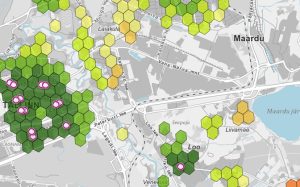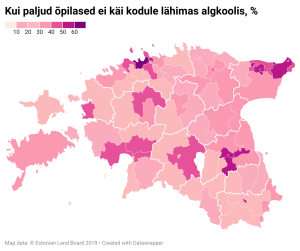The Land and Spatial Development Board, the Ministry of Regional Affairs and Agriculture, the Foresight Centre and Statistics Estonia have created a map application of public services. Anyone can use this to find out how far the nearest kindergarten, school, family doctor and other public services are from their home.
News
The analysis of the Foresight Centre shows that increasing the revenues of Estonian municipalities would improve the quality and availability of public services. However, the annual growth of revenues is not enough for this. It is necessary to find extra income, carry out fundamental innovative changes, or reduce the responsibilities of the municipalities.
Nearly half of the students in Estonia do not attend the primary school closest to their home and almost 60% do not go to the upper secondary school of their residence. According to the short report ‘Estonian Internal Educational Migration in General Education’ by the Foresight Centre, large-scale domestic educational migration indicates that many families are looking for higher quality education and reject the schools closest to their home.
This year, the Foresight Centre researches the accessibility of local services. For this, the spatial data is analysed in order to assess the distance of the most essential services from people’s homes. The efficiency of municipalities is also analysed in order to get an overview of how effectively the available resources are used.
In Estonia, hobby education is more accessible to children of more educated and wealthier parents and mainly in Harju, Tartu and Pärnu counties. Ensuring the accessibility of hobby education for children with special educational needs and more difficult socioeconomic backgrounds is a major challenge according to the Foresight Centre’s short report ‘Accessibility of hobby education in Estonia’.
After the administrative reform, the differences in the revenues of the so-called wealthy and poor municipalities decreased and the income per resident significantly increased. Today, however, the gap between municipalities is widening again, according to the Foresight Centre’s short report ‘Trends in local government revenues’.
According to Foresight Centre’s short report ‘Community Schools in Estonia’, transforming local schools and kindergartens into modern community houses would help to revitalise public services in danger of closure. For example, remote work offices, family doctor and youth centres, as well as various sports and hobby groups could be located there. However, although this model offers the greatest benefits to peripheral regions, the municipalities of Harju County are currently more active in creating such multifunctional houses.

 An independent think tank at the Riigikogu
An independent think tank at the Riigikogu 





